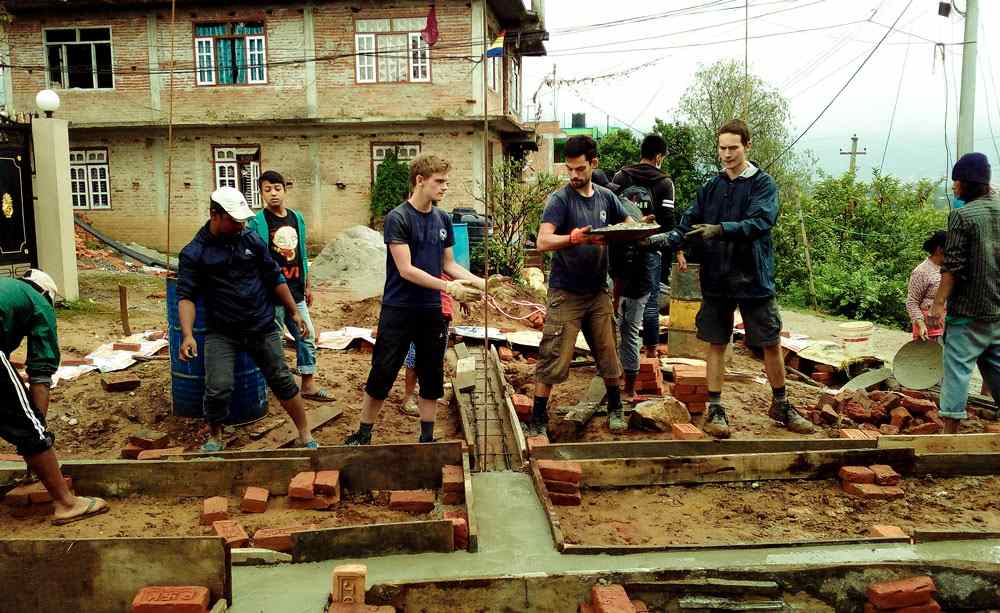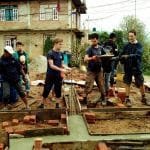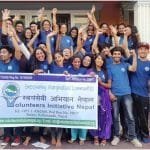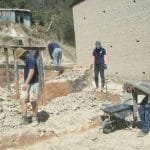
What has ViN achieved in Disaster Risk Reduction Program by now?
Rapid response
Disaster Preparedness
T. Beneficiaries
Rehabilitation
Reconstruction and Sustainability
Disaster and Risk Reduction Research
What is Disaster Risk Reduction?
Another program at VIN is the Disaster Risk Reduction program. Nepal is exceedingly prone to floods and landslides, particularly due to a dissected topography, rugged and fragile geophysical structure, very high peaks, with a high angle of slopes, complex geology, variable climatic conditions, and active tectonic processes. Large sections of the country are likely to suffer from episodic drought. Climate change worsens the conditions as the climate gets more and more extreme day by day inviting disasters. Hence, every year the country has to bear the brunt of the most common natural disaster claiming many human lives huge economic losses, and earthquakes.
Historic Earthquake
A devastating earthquake hit Nepal in April 2015. The death count scaled to over 8,500 and more than 22,300 people were left injured. Out of 75 districts, 31 were affected, 14 of which were deeply impacted. The earthquakes destroyed 498,852 houses and 2,656 government buildings. An additional 256,697 private houses and 3,622 government buildings were partially damaged.
Death data for the period 1971-2007 documented more than 27,000 deaths, which designates an average loss of more than two lives due to natural calamities per day. In addition to the high death rates, more than 50,000 people were reported as injured, about 3,000 missing, and about 5 million people were affected during the same period. More people in Nepal are killed by calamities compared to any other country in South Asia.
Human-related problems such as violence, injury, fire, poisoning, epidemic disease, and more keep following disasters. The unplanned settlement, increasing population, weak economic conditions, low literacy rate, lack of coordination among agencies related to disaster management, resource constraint, the lack of technical manpower, the lack of public awareness, very remote, rural, and difficult geophysical situation of the country, coupled with an absence of modern technology are major obstacles to cope with these natural disasters in Nepal.
The most common and frequent natural disasters are:
Landslides:
Among the natural hazards that occur regularly in Nepal, floods and landslides are by far the most serious ones. They claim many human lives every year and cause other damages such as destruction and blockages of highways, and losses of livestock, crops, and agricultural land.
Earthquakes:
Geologically, Nepal is considered to lie in a seismic zone that experiences frequent earthquakes. As a result, earthquakes of various magnitudes occur almost every year and have caused heavy losses of lives and infrastructures on several occasions.
Windstorms, hailstorms, thunderbolts:
Raw exposure to the elements often affects many areas of the country regularly. These events, particularly the hailstorms, cause considerable damage to the crops in the fields.
Forest Fire:
Every year forest fires occur in many places of the country and cause heavy losses of property as well as a decrease in many species of wildlife and vegetation.
Glacial lake outburst flood events:
Apart from landslides and river erosion, the high mountains or Himalayas of Nepal, covering about 15 percent of the country, are quite susceptible to land degradation caused by glacial lake outburst floods (GLOF).
The major goal of this program is to minimize the risk of natural disasters and provide relief and safety to vulnerable communities. We place a major focus on educating communities on issues such as Reduction program, Response, Mitigation, and Preparedness and Resilience techniques. VIN promotes and ensures disaster-resilient implementation by construction and rehabilitation of disaster-resilient infrastructure (household, school, and public toilets, water supply schemes, micro irrigation, houses, etc.). Skills development and involvement of affected people in entrepreneurship by providing training is yet another mitigation strategy to reduce the long-lasting impacts of a disaster.
How does VIN practice a Risk Reduction strategy?
After the devastating earthquake of 2015, the entire nation was left in irreparable grief, sorrow, and deep scars on the economy and infrastructure. Realizing this fact, VIN held up and initiated a disaster relief & recovery project to support the earthquake victims providing Emergency Relief in three districts of Nepal – mainly, Kathmandu, and Okhaldhunga.
Thereafter, the Earthquake Disaster Response & Relief program was developed into three project phases; Rapid rescue and Response early, Rehabilitation as a medium, and Reconstruction and sustainability as a long-term project intervention, addressing the four major disaster management phases:
- Mitigation– Preventing and minimizing the effects of disaster
- Preparedness– Planning how to respond
- Rapid Response– Minimise the hazards created by a disaster, rescue, and emergency relief
- Recovery– Building Back Better – Returning to the normal stage through short-term and long-term rehabilitation and reconstruction initiatives
Volunteer’s Report on DRR – Bhadaure in 2023 [PDF]: DRRResearchReport_Bhadaure2023
Volunteer’s Report on DRR – Thulachhap in 2023 [PDF]: DRRResearchReport_Thulachhap2023
Main Risks in Bhadaure [PDF]: Main Risks In Bhadaure
Main Risks in Thulachhap [PDF]: Main Risks in Thulachhap

 Intern
Intern Donate
Donate Sponsor a child
Sponsor a child Partner
Partner Promote
Promote Fundraise
Fundraise Fellowships and staff exchanges
Fellowships and staff exchanges



 Member of
Member of